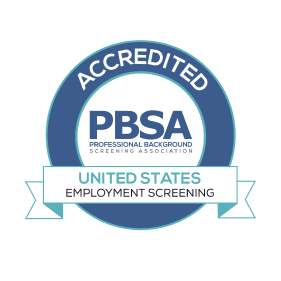How to Assess and Strengthen HR Leadership Development
Leadership development is an ongoing journey, especially in human resources, where leaders face unique challenges. HR leaders’ role is complex and dynamic, requiring them to manage people, drive organizational culture, and align HR strategies with business goals.
Organizations must assess current capabilities, identify gaps, and implement tailored programs to effectively address leadership development. On an episode of America Back to Work, Tina Grimes, CEO of TINA Enterprises and a seasoned leadership expert, succinctly stated, “Leadership is about helping individuals and organizations get from where they are to where they want to go.”
How can organizations assess and develop HR leadership to cultivate a thriving workplace culture and align with strategic objectives?
Understanding the Importance of Leadership in HR
HR leaders are pivotal to shaping company culture, enhancing employee engagement, and driving business outcomes. However, leadership shortcomings can lead to high turnover, low morale, and ineffective communication—problems that can ripple across an organization.
Grimes highlights key indicators of leadership issues, “When there is high turnover, low morale, or a culture of gossip, it often points to underlying leadership challenges. Employees are talking about their leaders, not to them, signaling a breakdown in trust and communication.”
Organizations must recognize the signs of weak leadership and proactively address these challenges before they affect productivity and employee satisfaction.
Assessing HR Leadership
Leadership assessment is the first step in identifying gaps and opportunities for growth. Effective tools and practices include:
- 360-Degree Feedback. This process involves gathering feedback from peers, subordinates, and supervisors to comprehensively view a leader’s performance. It highlights strengths and areas for improvement, enabling leaders to align their development with organizational needs.
- Leadership Assessments and Personality Tools. Grimes emphasizes the importance of tools like DISC or StrengthsFinder to understand leadership styles and interpersonal dynamics. “Assessments are a non-confrontational way to uncover leadership tendencies and spark productive conversations,” she explains.
- Employee Surveys and Focus Groups. Collecting feedback from employees about their experiences with leadership can reveal valuable insights. Pay attention to patterns in responses to identify systemic issues versus isolated concerns.
- Performance Metrics and KPIs. Evaluating HR leaders based on measurable outcomes, such as employee retention rates, engagement scores, or time-to-hire metrics, provides an objective perspective on their effectiveness.
Addressing Leadership Gaps
Once gaps are identified, organizations can implement targeted development strategies. These initiatives should focus on building essential competencies such as communication, adaptability, and strategic thinking.
- Building Communication Skills. Effective communication is at the core of great leadership. HR leaders must clearly and empathetically convey vision, expectations, and feedback. Grimes notes, “A leader’s ability to connect with employees across generations is critical. Each group communicates differently and has distinct motivations.”
- Encouraging Accountability and Ownership. Leaders who avoid accountability can erode trust. Organizations must emphasize the importance of taking responsibility for good and bad outcomes. By modeling accountability, HR leaders set a standard for the entire organization.
- Developing Emotional Intelligence (EQ). Empathy, self-awareness, and emotional regulation are vital traits for HR leaders. Programs that enhance EQ help leaders build stronger relationships, navigate conflict, and inspire trust.
- Offering Tailored Training and Coaching. Leadership training should go beyond generic workshops. Programs customized to address specific challenges and goals are far more effective. One-on-one coaching can also provide a safe space for leaders to explore vulnerabilities and develop actionable improvement plans.
Overcoming Resistance to Development
One of the greatest barriers to leadership development is resistance from leaders themselves. Grimes observes, “A leader’s willingness to accept feedback and embrace growth is often the determining factor in whether development efforts succeed.”
To address this, organizations should:
- Use Data-Driven Insights: Assessment tools provide objective feedback, reducing defensiveness.
- Highlight Benefits: Emphasize how development will enhance both personal and organizational success.
- Engage Leaders in the Process: Involve them in developing plans to foster ownership and commitment.
Creating a Leadership Culture
Leadership development isn’t a one-time initiative—it’s a continuous process that should be embedded in organizational culture. Companies can achieve this by modeling leadership from the top. Senior leaders must demonstrate the behaviors they expect from others. Grimes says, “I’ve seen CEOs recognize their own gaps during leadership assessments and commit to improving. That level of vulnerability inspires the entire organization.”
They can promote continuous learning by providing ongoing opportunities for training, mentorship, and professional growth. This reinforces the idea that leadership is an evolving skill.
They can recognize and reward good leadership. Celebrate leaders who exemplify the organization’s values and contribute to its success. Recognition reinforces positive behaviors and motivates others to follow suit.
Evaluating Leadership Development Efforts
Organizations should measure outcomes regularly to ensure the effectiveness of leadership development programs. This involves:
- Tracking changes in key metrics, such as employee engagement and turnover rates.
- Soliciting feedback from participants and their teams.
- Adjusting programs based on results and evolving needs.
Grimes underscores the importance of adaptability, “Leadership is not static. What worked yesterday might not work today. Organizations need to stay agile and responsive to change.”
HR Leadership Development Comes In All Sizes
Assessing and addressing leadership development, particularly in HR, is a strategic priority for organizations aiming to thrive in today’s competitive environment. By identifying leadership gaps, implementing targeted development programs, and fostering a culture of continuous growth, businesses can empower their HR leaders to drive meaningful change.
As Tina Grimes aptly states, “Leadership isn’t just about being in charge—it’s about setting others up to win. When leaders prioritize connection, accountability, and communication, they build stronger teams and healthier organizations.”
By investing in HR leadership, organizations retain top talent and create a foundation for long-term success.







